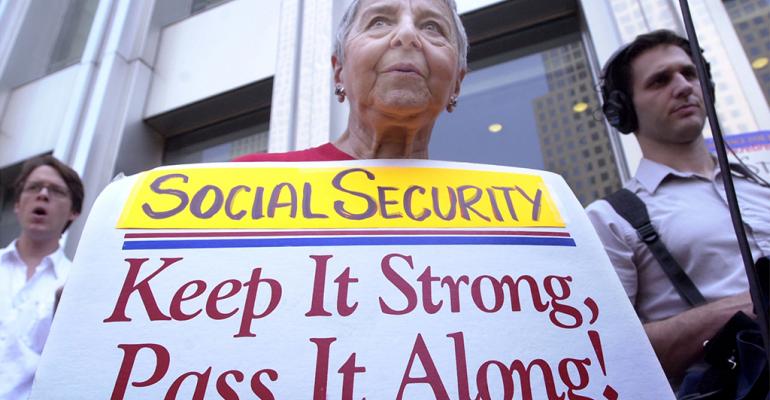An advisor who can provide good retirement planning information to government employees can be of enormous value, particularly when it comes to Social Security. The truth is that very few people really understand how Social Security integrates with “non-covered” pensions. That is, pensions, often for state and local government employees, where the employee doesn’t pay into the Social Security system.
Frankly, the two government provisions, Windfall Elimination Provision (WEP) and Government Pension Offset (GPO), are some of the most difficult Social Security concepts to grasp. But if you’re working with government employees, chances are good that it’s going to come up. So you need to understand at least the basics.
Primary Insurance Amount
Over the next few articles, I’ll try to cover the two provisions you need to understand if you work with government employees. First let’s take a look at the basic concept. To understand the problem Social Security is trying to address, you need to know something about how the benefit is calculated. The primary insurance amount (PIA) is used to calculate the monthly benefit. This is the amount listed on the statement where it says: “if you continue working until your full retirement age (66 years), your payment would be about $____ a month.
Now, here’s where it gets tricky. The PIA is calculated using a formula that’s designed to be more favorable to low-income workers. The first tier of the PIA is calculated at 90 percent of monthly average earnings. The second tier is 32 percent and the third tier is 15 percent. So a low-income worker will have a much larger percentage of his income replaced at the 90 percent rate. This essentially means that a low-income worker gets more money back per dollar of withholding tax.
Windfall for Government Employees
Now, consider that some government employees (and some people who worked in foreign countries) aren’t “covered” for Social Security benefits. That is, some federal, state or local government employers provide employer-sponsored retirement plans for their employees so that neither the employer nor the employee pays Social Security taxes. The non Social Security-covered retirement program is considered to be in lieu of Social Security.
So what happens when someone like your client works, say, for 30 years in a job with a “non-covered” pension, followed by 10 years in another job? That person would have a 10-year work history with Social Security and would be eligible for Social Security retirement benefits. The highest 35 years of earnings is what’s used to calculate the average. Zeroes are added for anything less than 35 years. With such a short work history, he would end up being treated similarly to a low-income worker—with the resulting higher relative benefit—even though he may have a generous pension from his previous job.
The government recognizes this possibility and may adjust your client’s Social Security benefits to reflect this windfall. There are two provisions that are used to reduce Social Security benefits in this scenario. The WEP can cause a reduction in a worker’s personal benefit. The GPO can reduce or even eliminate Social Security spousal benefits to someone in the same scenario. I’ll cover both of these in detail in the next two articles.
Social Security Statement
The Social Security statement provided by the Social Security Administration is a critical starting point in the planning process. The statement should give you a hint as to where the employee stands. Take a look at the client’s work history on page 3 of the statement. One clue might be seeing a significant number of years that list the Social Security earnings as $0, but there’s higher number listed for the Medicare earnings. That’s a tip off that you may be looking at a WEP or GPO situation, even if the statement doesn’t indicate it.
Now for some good news. Most federal government employees hired after 1983 don’t have to worry about this. They’ve paid into Social Security all along, so they’re not affected. But federal employees hired prior to 1983 are generally considered civil service employees and may in fact have to deal with WEP and GPO. Teachers may or may not be, depending on the state they work in.
But keep in mind that either way, the only people who have to worry are those who worked: (1) for a number of years with a non-covered pension, but still worked enough outside of that job to qualify for a Social Security benefit, or (2) for a number of years with a non-covered pension but have a spouse who are covered by Social Security. I’ll take a detailed look at that these groups in the next two articles.





